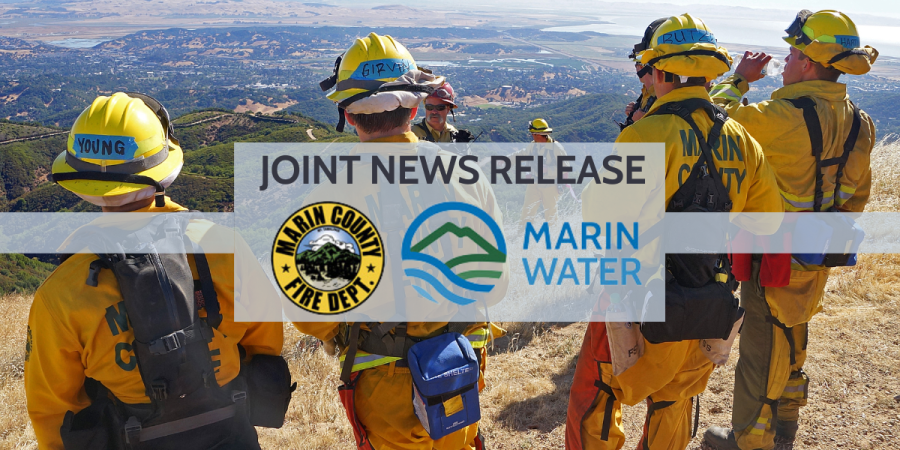Oct. 6, 2023
Corte Madera – In the coming days, the Marin County Fire Department may conduct a prescribed burn on Marin Water’s Mount Tamalpais Watershed, wielding an important tool in a proactive approach to fire fuel management and a more resilient, ecologically healthy watershed. If implemented, the one- to three-day operation will occur in the Rock Spring Trailhead area where Ridgecrest and Pantoll roads intersect.
The possible timeframe for the prescribed burn is between October 10-12. Marin County Fire and Marin Water will announce the specific date of the operation the morning of ignition after evaluating the weather, fuel conditions, and other important factors influencing fire behavior.
Although the operation will strictly adhere to the requirements of the Bay Area Air Quality Management District, the surrounding community may smell or see smoke. Community members should refrain from calling 911 to report this smoke to avoid overwhelming emergency dispatch lines. Once implemented, West Ridgecrest Boulevard will be closed to vehicle traffic and trails in the immediate vicinity of the controlled burn will be closed throughout the operation. Watershed visitors are required to heed closure signs.
The burn will be performed by Marin County firefighters, and active patrols and mop-up of the area will continue for several days following the burn. The plans call for the burn operation to treat up to 34 acres of overgrown vegetation between Stinson Beach and Mill Valley on the southwestern edge of the Mt. Tam Watershed. Total acreage will be determined by conditions during the controlled burn activity.
Public notification in advance of controlled burns is critical, especially anywhere near an iconic and highly visible landmark such as Mt. Tam. The sight and smell of smoke may alarm residents and visitors who enjoy views of the mountain. Publicity of a scheduled burn helps quell fears and reduce calls to 911 dispatchers who are busy dealing with emergencies. Advanced public outreach – including Nixle alerts, social media, email, and signage on the watershed – will be activated in an effort to ensure the public is aware of the planned operation.
Controlled burns are carefully planned and must meet strict criteria for ecological benefit, weather parameters, smoke management, and fire safety guidelines. When all conditions are met, trained wildland firefighters conduct the burn while monitoring the set criteria, fire behavior, and designated fire control lines.
Marin County Fire uses controlled burns, among other vegetation management approaches, as an efficient and cost-effective way to reduce fuels across large landscape areas where physical and social conditions are conducive to its use. The result can aid firefighters with fire suppression efforts during a wildfire by creating a natural firebreak, which can limit fire spread helping to protect the surrounding community. Learn more about controlled burns on the department's vegetation management page.
Marin County Fire may coordinate more controlled burn operations with Marin Water in the years to come as both agencies work to bolster the resiliency of wildland areas within the watershed. The agencies will inform the surrounding community before any controlled burn operation is undertaken.
As detailed in Marin Water’s Biodiversity, Fire and Fuels Integrated plan, thinning overgrown vegetation using controlled burn is an important tool for reducing the risk of catastrophic wildfire on the District’s watershed lands, while also supporting the watershed’s ecological health. High-intensity wildfires have the potential to degrade forests and watershed functions, potentially harming water quality and water supply infrastructure that’s integral to the District’s ability to deliver clean, reliable water to more than 191,000 residents in central and southern Marin County. As with the District’s goat grazing and hand crew-led efforts, controlled burn creates critical fuel breaks that can slow advancing wildfires, protect neighboring communities and leave less dense, more resilient woodlands behind. Find out more about these efforts at Marin Water’s watershed resiliency webpage.
 Translate
Translate